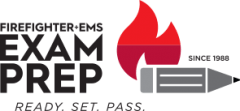Many children dream of being firefighters when they grow up. The challenge and excitement of battling blazing infernos and rescuing people who are in danger is thrilling for youngsters who don’t quite understand the demands and inherent dangers of being a firefighter. For some, however, the call to serve and protect never goes away. Those among us who are prepared to answer that call are cut from a different cloth. If you want to become a firefighter, here are the five steps you need to take.
Check Off the Basics
Before you begin the journey toward becoming a firefighter, you have to make sure you qualify. Recruits must be at least 18 years of age, though some limited on-the-job training can begin at a younger age. They must also hold a valid driver’s license and be able to pass a criminal background check and drug screening.
During the recruitment process, applicants must demonstrate both mental and physical ability. Pre-tests to move forward to the next stage include written and physical components. For the written exam, applicants are test their spatial awareness, reading comprehension, mechanical reasoning, logic observation, and memory. Physically, one must be able to pass the Candidate Physical Ability Test (CPAT). This includes being able to run for a pre-determined time period, rapidly climb up and down stairs, and lift and carry at least 200 pounds.
EMT Certification
Because firefighters often find themselves facing situations involving injury or illness, some jurisdictions require firefighters to be certified as Emergency Medical Technicians. This licensing includes basic first aid care for patient stabilization and transportation to a medical facility. CPR, tourniquet application, and wound treating as well as other basic care training can supplement your ability to act quickly and as needed.
Learn more about Performance Training Systems EMS exam prep services here!
Enroll in a Fire Academy
Once you qualify as a future firefighter, enrolling in a fire academy can provide classroom and hands-on training can enrich on-the-job training. In the classroom environment, you can learn about things which may not be covered in the field, such as arson prevention or hazardous waste identification and management. Fire academies also provide controlled training scenarios to learn the proper techniques and methods necessary for a variety of real-world situations.
Optional: Formal Education
If you want to explore further career options within the emergency services industry, considering higher education options can help set you up for a full and fulfilling career. Colleges, universities, and trade schools offer Associate and Bachelor degrees that can make the path to career growth easier. For those interested in fire science, transitioning to a paramedic role, or seeking advancement in leadership as a firefighter, higher education may be necessary. A Bachelor’s or Master’s Degree in Forestry with a focus on firefighting or environmental protection opens employment avenues that may not be available otherwise.
Continued Learning
Even if you are not interested in other career avenues, continuous learning is vital to being a successful firefighter. Staying on top of advancements in fire prevention and firefighting technologies is key to protecting people and saving those in need. Continuing to take training courses and refresh your knowledge will keep you on top of your game for as long as possible. Firefighter exam prep with Performance Training Systems can help!
For more information about our EMS and firefighter exam prep services, contact us today!
